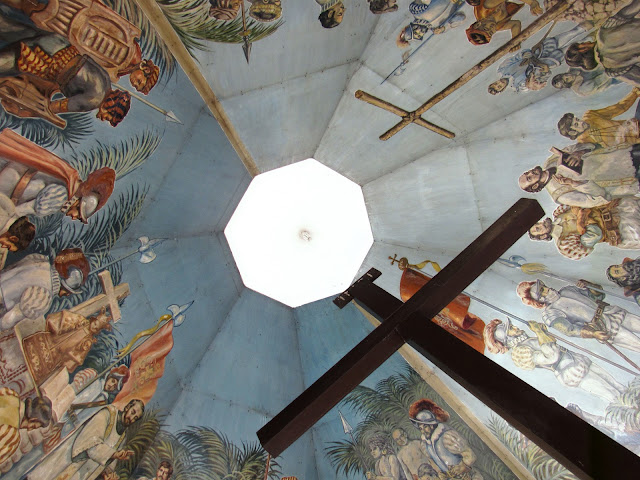 |
| The steps leading to Regina Rosarii |
 |
| Regina Rosarii |
I was invited by Ime Sarmiento to go up Tanay, Rizal along with a few native tree advocates. We visited Regina RICA which had a large statue of Mother Mary resting on top a hill. I was thinking that this was tree immersion trip but it turned out it was a spiritual one.
 |
| One of 17 cherubims |
All I could say is that I was dreading to climb the hill! I was looking at the image of Regina Rosarii (Mary, Queen of the Holy Rosary) and it looked difficult to tackle. Adding the fact that it was a nice sunny day, but since the sun was up and above, the heat literally burns the skin. But when I started to brave 309 steps needed to reach the Holy Mother, it proved easy to do. The slope was manageable and in no time at all, I was at the foot of the towering madonna statue. The view on top of the hill was wonderful and upclose the statue's smile was warm and assuring.
 |
| The statue's gentle smile |
A Dominican sister was waiting for us there and explained to us a few important items before we immersed ourselves to introduction to contemplative prayer. From what the sister told us, these are the facts I gathered. Regina Rosarii of Regina RICA stands on the highest hill in a 13.5 hectare land in Tanay Rizal, adjacent to the famed Erap property. The fiberglass statue towers over everything, its height at 7.1 meters. It is so big that it houses an adoration chapel underneath the image's garments. It had 17 cherubims adoring and adorning the flowing robes of Regina Rosarii.
 |
| There is a small chapel below the statue |
Probably the most rewarding was the contemplative prayer primer. The instructions were basic but the simple positions proved to be helpful in clearing the mind of other concerns and focus on tranquility. Made me appreciate the nice mountain breeze and the peaceful ambience. Overall it made climbing Regina RICA a worth while task. Thank you, Ma'am Ime, for this different Christmas experience.


















































